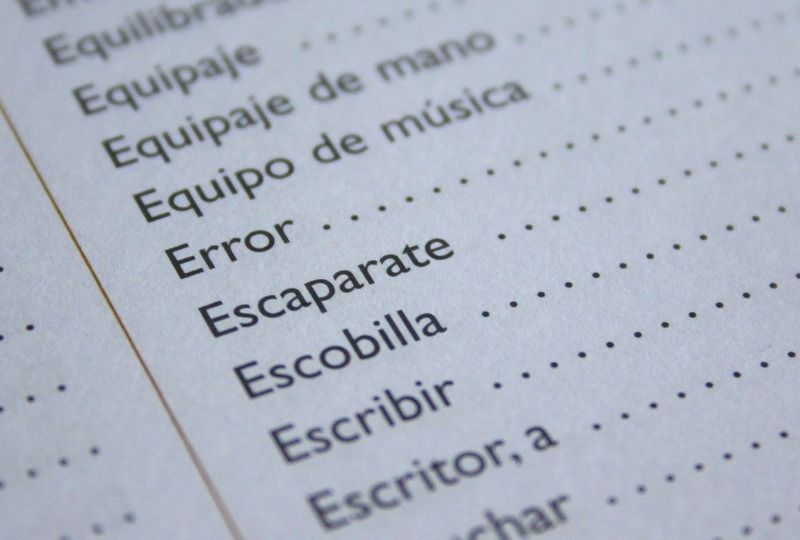Advanced Spanish Grammar and Mastering Irregular Verbs

Learning Spanish can be a rewarding yet challenging journey, especially when it comes to mastering irregular verbs. While regular verbs follow predictable patterns, irregular verbs can often seem perplexing and inconsistent. However, with consistent practice and a clear understanding of the rules and exceptions, you can conquer these grammatical hurdles. In this article, we'll explore various categories of irregular verbs, including stem-changing verbs, irregular yo verbs, orthographic-changing verbs, irregular past tense conjugations, and completely irregular verbs. Let's dive in and enhance your Spanish grammar skills!

Stem-Changing Verbs
Stem-changing verbs, also known as "shoe verbs" or "boot verbs," undergo a vowel change in the stem of the verb in certain forms. These changes occur in the present tense and affect all forms except for nosotros and vosotros. The three main types of stem changes are e:ie, o:ue, and e:i.
The first type of stem changing verb is e:ie. The last e in the stem (the entire non-conjugated verb except the last two letters) will change to an ie. An example of this is the verb pensar (to think). Note that nosotros and vosotros do not stem-change. Here’s how it’s conjugated:
| Spanish | English |
|---|---|
| Yo pienso | I think |
| Tú piensas | You (informal) think |
| Usted piensa | You (formal) think |
| Él piensa | He thinks |
| Ella piensa | She thinks |
| Nosotros pensamos | We think |
| Vosotros pensáis | You all (informal) think |
| Ustedes piensan | You all (formal) think |
| Ellos piensan | they (masculine) think |
| Ellas piensan | they (feminine) think |
The second type of stem changing verb is o:ue. The last o in the stem will change to a ue. An example of this is the verb dormir (to sleep). Note that nosotros and vosotros do not stem-change. Here’s how it’s conjugated:
| Spanish | English |
|---|---|
| Yo duermo | I sleep |
| Tú duermes | You (informal) sleep |
| Usted duerme | You (formal) sleep |
| Él duerme | He sleeps |
| Ella duerme | She sleeps |
| Nosotros dormimos | We sleep |
| Vosotros dormís | You all (informal) sleep |
| Ustedes duermen | You all (formal) sleep |
| Ellos duermen | they (masculine) sleep |
| Ellas duermen | they (feminine) sleep |
The third and final type of stem changing verb is e:i. The last e in the stem will change to an i. An example of this is the verb pedir (to ask for). Note that nosotros and vosotros do not stem-change. Here’s how it’s conjugated:
| Spanish | English |
|---|---|
| Yo pido | I ask for |
| Tú pides | You (informal) ask for |
| Usted pide | You (formal) ask for |
| Él pide | He asks for |
| Ella pide | She asks for |
| Nosotros pedimos | We ask for |
| Vosotros pedís | You all (informal) ask for |
| Ustedes piden | You all (formal) ask for |
| Ellos piden | they (masculine) ask for |
| Ellas piden | they (feminine) ask for |
Understanding and memorizing these patterns will significantly improve your ability to conjugate stem-changing verbs correctly.

Irregular Yo Verbs
Irregular yo verbs are those that have an irregular conjugation in the first-person singular (yo) form. These irregularities often extend to other tenses and moods, especially the subjunctive.
Some examples of irregular yo verbs are as follows:
| Verb | Yo form conjugation | Meaning |
|---|---|---|
| Hacer | Yo hago | I do/make |
| Poner | Yo pongo | I put |
| Salir | Yo salgo | I go out |
| Conocer | Yo conozco | I know (person/place) |
| Saber | Yo sé | I know (fact) |
| Dar | Yo doy | I give |
| Traer | Yo traigo | I bring |
| Ver | Yo veo | I see |
These irregular yo forms must be memorized, as they do not follow a predictable pattern.

Orthographic-Changing Verbs
Orthographic-changing verbs undergo spelling changes to maintain pronunciation. These changes occur in specific tenses and forms, primarily to preserve the sound of the original verb stem.
Some examples of orthographic-changing verbs are as follows:
Llegar (to arrive): In the preterite and the subjunctive, a u is added to maintain pronunciation, giving us yo llegué and yo llegue, respectfully.
Tocar (to touch/to play an instrument): In the preterite and the subjunctive, a u is added to maintain pronunciation, giving us yo toqué and yo toque, respectfully.
Empezar (to start): In the preterite and the subjunctive, the z is replaced by a c, giving us yo empecé and yo empiece, respectfully.
These changes are crucial for maintaining the correct pronunciation and must be learned and practiced.

Irregular Past Tense Conjugations
Irregular past tense conjugations are common in both the preterite and imperfect tenses. These verbs do not follow regular conjugation patterns and must be memorized individually.
Some examples of irregular preterite conjunctions are as follows:
Ser/Ir (to be/to go)
| Spanish | English |
|---|---|
| Yo fui | I was/went |
| Tú fuiste | You (informal) were/went |
| Usted fue | You (formal) were/went |
| Él fue | He was/went |
| Ella fue | She was/went |
| Nosotros fuimos | We were/went |
| Vosotros fuisteis | You all (informal) were/went |
| Ustedes fueron | You all (formal) were/went |
| Ellos fueron | they (masculine) were/went |
| Ellas fueron | they (feminine) were/went |
Tener (to have)
| Spanish | English |
|---|---|
| Yo tuve | I had |
| Tú tuviste | You (informal) had |
| Usted tuvo | You (formal) had |
| Él tuvo | He had |
| Ella tuvo | She had |
| Nosotros tuvimos | We had |
| Vosotros tuvisteis | You all (informal) had |
| Ustedes tuvieron | You all (formal) had |
| Ellos tuvieron | they (masculine) had |
| Ellas tuvieron | they (feminine) had |
Hacer (to do/make)
| Spanish | English |
|---|---|
| Yo hice | I did/made |
| Tú hiciste | You (informal) did/made |
| Usted hizo | You (formal) did/made |
| Él hizo | He did/made |
| Ella hizo | She did/made |
| Nosotros hicimos | We did/made |
| Vosotros hicisteis | You all (informal) did/made |
| Ustedes hicieron | You all (formal) did/made |
| Ellos hicieron | they (masculine) did/made |
| Ellas hicieron | they (feminine) did/made |
These irregular forms are essential for accurate past tense communication in Spanish.

Completely Irregular Verbs
Some verbs are completely irregular and do not fit into any of the above categories. These verbs must be memorized as their conjugations are unique and unpredictable.
Some examples of completely irregular verb conjunctions in the present tense are as follows:
Ser/Ir (to be)
| Spanish | English |
|---|---|
| Yo soy | I am |
| Tú eres | You (informal) are |
| Usted es | You (formal) are |
| Él es | He is |
| Ella es | She is |
| Nosotros somos | We are |
| Vosotros sois | You all (informal) are |
| Ustedes son | You all (formal) are |
| Ellos son | they (masculine) are |
| Ellas son | they (feminine) are |
Ir (to go)
| Spanish | English |
|---|---|
| Yo voy | I go |
| Tú vas | You (informal) go |
| Usted va | You (formal) go |
| Él va | He goes |
| Ella va | She goes |
| Nosotros vamos | We go |
| Vosotros vais | You all (informal) go |
| Ustedes van | You all (formal) go |
| Ellos van | they (masculine) go |
| Ellas van | they (feminine) go |
Dar (to give)
| Spanish | English |
|---|---|
| Yo doy | I give |
| Tú das | You (informal) give |
| Usted da | You (formal) give |
| Él da | He gives |
| Ella da | She gives |
| Nosotros damos | We give |
| Vosotros dais | You all (informal) give |
| Ustedes dan | You all (formal) give |
| Ellos dan | they (masculine) give |
| Ellas dan | they (feminine) give |
These verbs require dedicated practice and repetition to master.

You Can Master Irregular Verbs
Mastering irregular verbs in Spanish is a critical step in advancing your language skills. By understanding and practicing stem-changing verbs, irregular yo verbs, orthographic-changing verbs, irregular past tense conjugations, and completely irregular verbs, you can enhance your fluency and accuracy. Remember to practice consistently and immerse yourself in the language as much as possible. The more you engage with these irregular verbs, the more natural they will become. Keep pushing forward and exploring the complexities of Spanish grammar—you've got this!